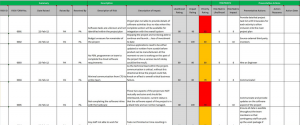 The commercialization stage of any New Product Development process is where the ‘rubber meets the road’ and the product you are manufacturing in China gets introduced into the market. This stage is actually the final stage of the development process.
The commercialization stage of any New Product Development process is where the ‘rubber meets the road’ and the product you are manufacturing in China gets introduced into the market. This stage is actually the final stage of the development process.
(Don’t forget that you can see the whole series on developing a new product here).
Commercialization requires proper planning
Commercialization is broken into phases, from the initial introduction of the product through its mass production and adoption. Considerations should be made for production methods and volumes, what distributions channels will be used, what marketing techniques will be implemented, as well as reviewing the sales and customer support requirements.
It is not a case of just launching a product and hoping for the best. There has to be a structured plan — a strategy that has been clearly thought out and can be implemented in a controlled environment.
Commercialization strategy
1. What’s the offering? (What are you trying to provide or create?)
Provide a holistic overview statement which clearly states what your product is and what it does and the benefits of using the product from a consumer/customer point of view. You should also state what the pricing strategy is going to be for both distribution channels and the end-user.
2. How does the product align with your core business?
Understanding how closely the product being launched aligns to the business core can determine some of the strategic directions required for the commercialization plan. The closer to the core, the fewer new strategies are required as a lot of the infrastructure would be re-usable. The more diverse from your core the more work is involved in setting up the new infrastructure.
Chris Zook in ‘Beyond the Core’ addresses several things when looking at a product opportunity with respect to the commercialization plan:
A. Core – Known business strengths and competencies
B. Adjacency – Relationship to the Core ranked from 0 (identical to the core) to Diversification (a completely new area).
C. Shared Economics – There are five dimensions that when evaluated and measure the distance from the core and can be used to determine the degree of relationship to the core:
- Customers – Are they the same as, or different from, customers currently served?
- Competitors – Are they the same as, or different from, competitors currently encountered?
- Cost Structure – Is the cost structure (infrastructure) the same or different?
- Channels of distribution –Are these the same or different?
- Singular capability/technology – If there is a singular capability (brand, asset, technology) that gives the core business its uniqueness, then is this relevant in the new opportunity?
3. Identifying the target market/customers
From the test marketing carried out in the previous phase, you should have an initial target market and customer profile already identified within the strategic plan. Now it is time to scale up operations and start to capitalize on all the hard work and dedication that has been got the new product this far.
4. Business plan and forecast
Part of the business and commercialization plan is forecasting — generally looking ahead three years. The forecast generally includes most of the following elements:
- Sales quantities
- Gross Margin and Gross Margin as a percentage of Sales
- Operating Income and Operating Income as a percentage of Sales
- CAPEX – CApital EXpenditure
- RONA – Return On Net Assets
5. Commercialization risks & issues
As with any risk analysis, you need to identify all the risks and potential issues that could affect the commercialization of your product. Once the risks have been written down, rate them from high to low and ensure you have risk mitigation actions in place to overcome the risks.
One method of generating a risk analysis plan is to follow the steps below (this is pretty close to an FMEA):
- Risk Description:- Detailed description of the risk
- Rank the Likelihood of the risk occurring: – How likely is the risk to occur?
- Rank the impact of the risk occurring: – What will the impact be if the risk did occur??
- Calculate risk value:- multiply the two values to get a risk value
- Assess risk values:- Assess the risk values. A good way of doing this is with a Pareto chart
- Generate action plan for all critical risks:- Actions need to be generated that mitigate the risks as best can be
- Re-evaluate risks after actions are in-place:- Re-evaluation will allow you to review and assess how successful the actions will be when implemented.
Here is an example (click on the image to see a larger version.)
6. Don’t use a “Ready, Fire, Aim” commercialization strategy
To maximize your chances for success, you need to be thoughtful in developing the strategies behind your new products. Innovations can happen in the commercialization of a product as easily as in the product itself. Think about all the ways you can build upon and leverage your commercialization strategy and you might find your sales teams more engaged in the product launch, your customers understanding what’s in it for them, and ultimately your new product goals being achieved. (Source: Lowell Dye.)
Go to part 19: Review your Business Performance in the Market
Want to learn more about the new product introduction process for hardware startups?
Whether you’re some way along the process, or just starting out, Sofeast’s guide covers everything hardware startups need to know for making a new product in China and successfully bringing it to market.
Hit the button below to read the guide:



